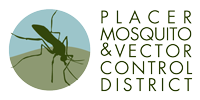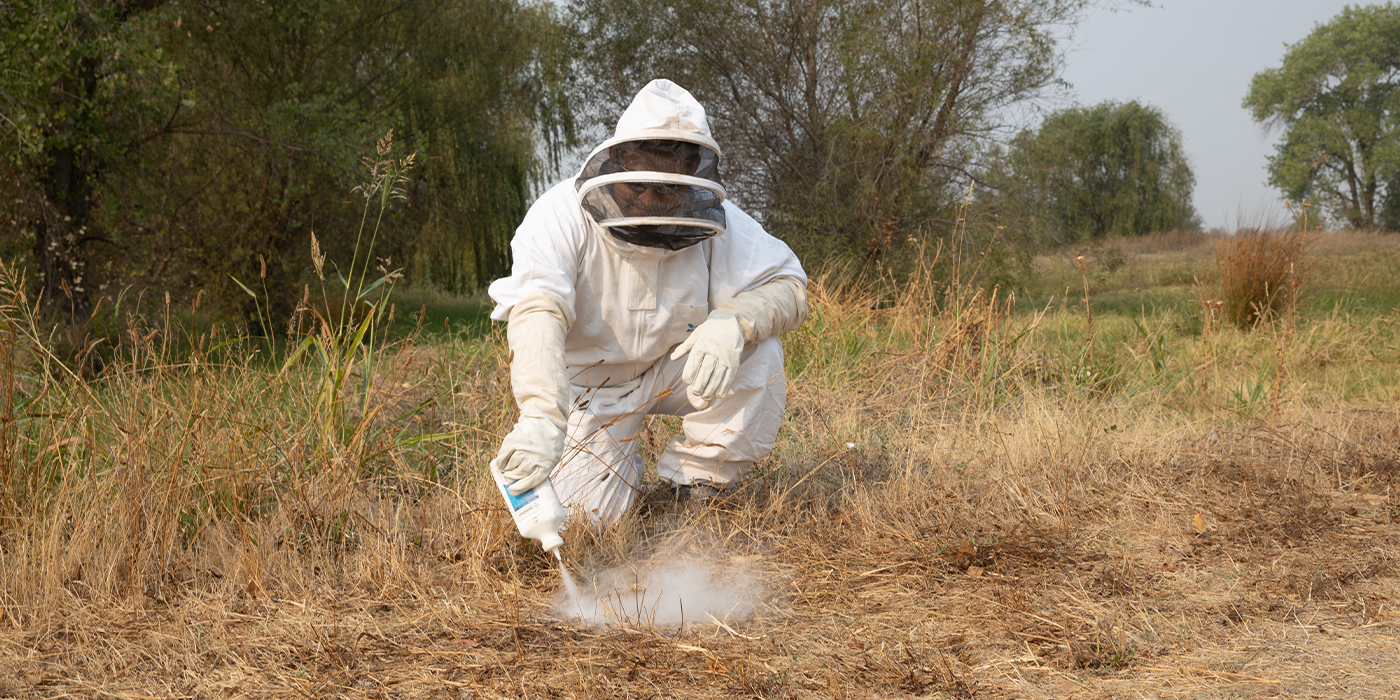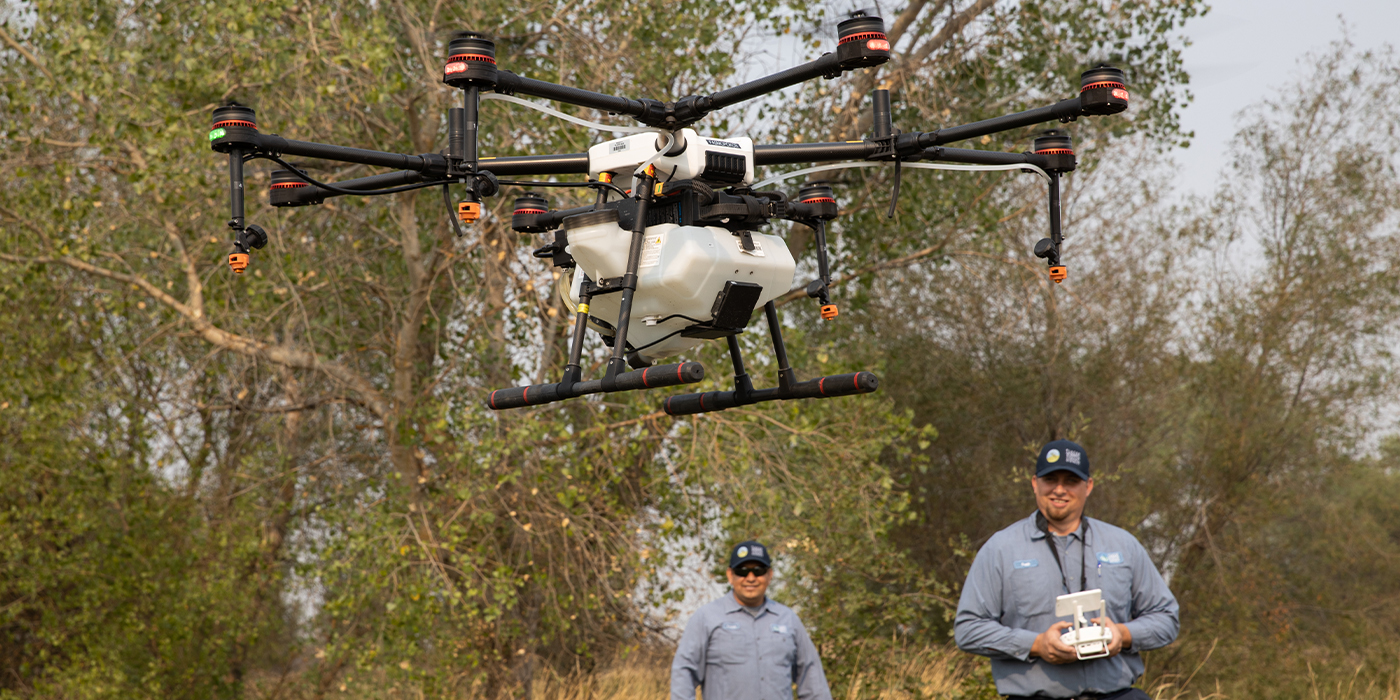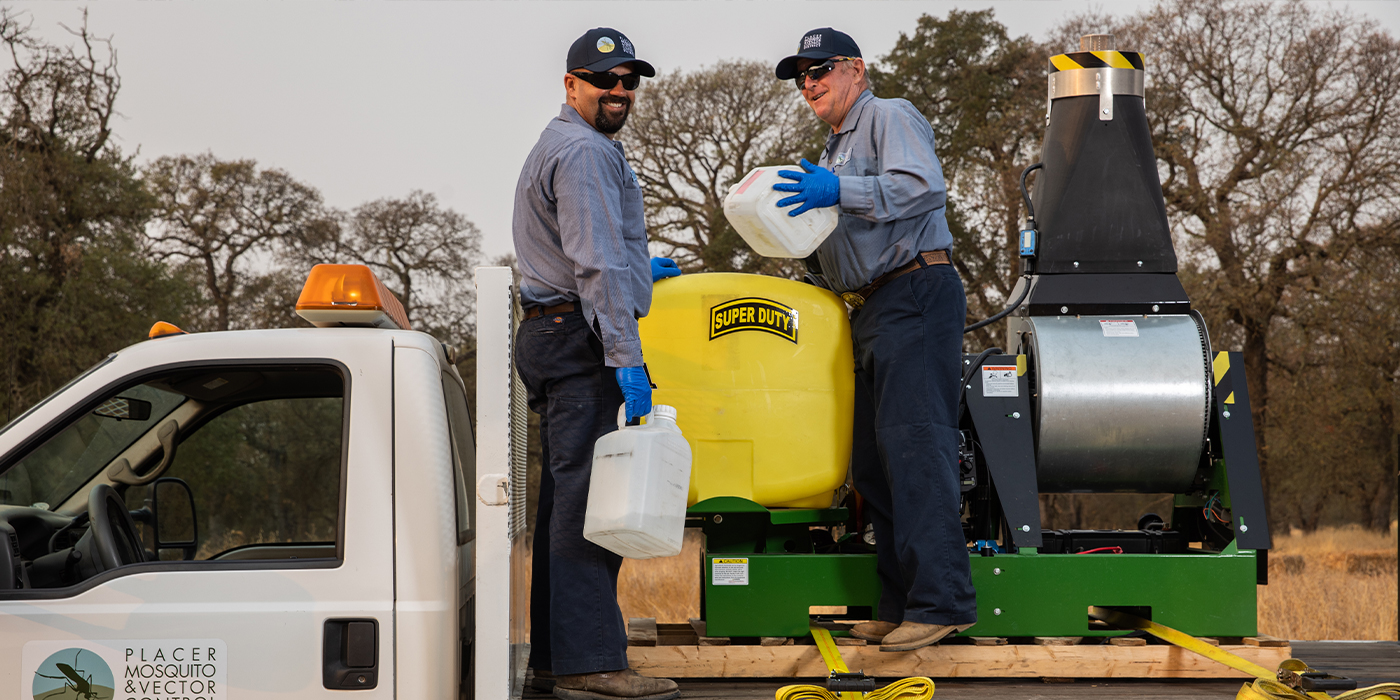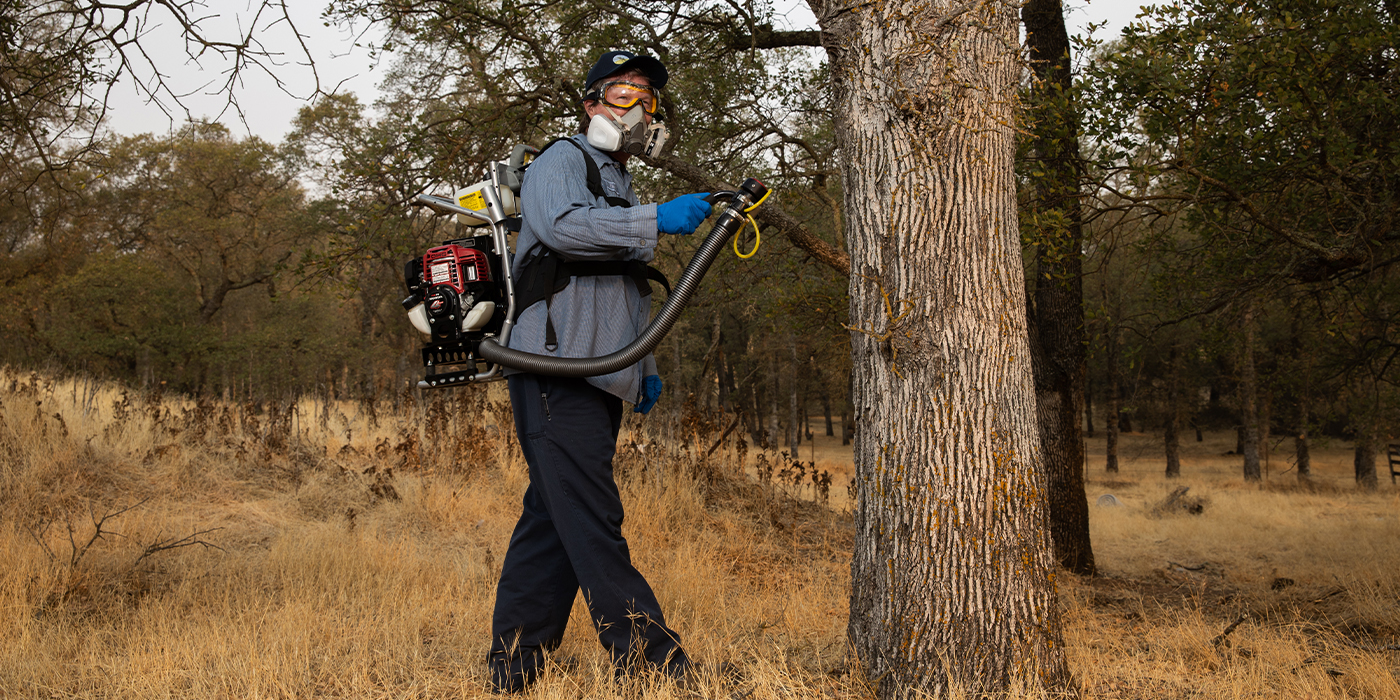Chemical control means using natural, microbial or synthetic insecticides that are registered for public health use by the Environmental Protection Agency and California Department of Pesticide Regulation to control mosquitoes and yellowjackets. In California, widespread insecticide treatments for tick control are generally not necessary or effective. Chemical control is used alone or along with biological or physical control methods to manage mosquito abundance.
The District applies all public health insecticides according to the label and follows all best practices. Depending on control operation, target and timing, public health insecticide applications may be made by hand equipment, ground vehicle or manned or unmanned aircraft. It is also used when emergency response is needed to rapidly disrupt or end mosquito-borne disease transmission to humans. These treatments are done by trained and state-certified District technicians.
MOSQUITO LARVICIDES
Larvicides target immature mosquitoes, also known as mosquito larvae. The majority of our chemical control efforts are spent on controlling mosquito larvae. We use a variety of larvicide types including microbial insecticides, insect growth regulators and larvicidal films and oils.
Microbial Insecticides
A common microbial larvicide is Bacillus thuringiensis israelensis (Bti). Bti is a bacteria that produces a protein crystal that, when eaten by a mosquito larva, destroys the larvae’s intestinal lining. The chemistry of Bti only affects mosquitoes and other insects in the fly family only if ingested. It has no effect on other organisms. Spinosad is another microbial larvicide that is used in specific situations.
Insect Growth Regulators
Methoprene is an insect growth regulator widely used by mosquito control districts. Methoprene mimics an insect hormone to prevent immature insects from shedding its exoskeleton and emerging into adults. Unable to develop into adults, the mosquitoes die in the pupal stage. Methoprene is used in areas where high concentrations of mosquito larvae are found like storm drains, unmaintained swimming pools and some types of flooded irrigation.
Larvicidal Films and Oils
Larvicidal films are generally used for controlling mosquito pupae. Mosquito pupae live in water but do not feed which makes other larvicides ineffective. Oils and films are usually applied by hand to standing water’s surface. The film reduces the surface tension of the water which makes it difficult for mosquito larvae and pupae to attach to the surface and breathe.
Depending on the location and size of the standing water, mosquito larvicides can be applied by:
- Hand-held equipment
- Single-engine agricultural airplanes (crop dusters)
- Backpack sprayer
- ATV or UTV
- Drone
- Truck
MOSQUITO ADULTICIDES
Adulticides are insecticides that reduce adult mosquito populations. The application method used to target adult mosquitoes while flying is ultra-low volume spray or fog. A very small quantity of insecticide is atomized into small droplets and broadcast in a fog aimed where the adult mosquitoes are active. ULV applications can be effective with a variety of application equipment matched to the treatment area size. By using accurate and timely surveillance data, we try to minimize the target area size to the smallest area to be effective and reduce mosquito biting and disease spread. For example, hand-held equipment is used in small localized areas like backyards and neighborhoods with wind oriented roads so they can be treated using truck-mounted application equipment. For very large target areas, over 1,000 acres or more, specialized manned aircraft are used for applications in urban and rural areas. This helps reduce the numbers of biting mosquitoes and the risk of mosquito-transmitted diseases.
Pyrethrins/Pyrethroids
The most common materials used for ULV spraying are classified as pyrethrins. Pyrethrin is a naturally occurring substance harvested from chrysanthemums. It degrades within four to six hours after spraying. Pyrethroids, a synthetic form of pyrethrins, are also commonly used. Pyrethroids can be used as residual sprays which are applied around structures to control adult mosquitoes that rest on treated surfaces. This type of application is used infrequently but may be the only option is some situations.
Organophosphates
Since mosquitoes are exposed to many different insecticide applications, mosquito control best practice is to rotate insecticide types to help limit insecticide resistance. Insecticide resistance is the tendency for local populations of mosquitoes to become tolerant to insecticides that are repeatedly applied allowing some mosquitoes to survive after treatment. These surviving mosquitoes pass on resistance genes to the next generation of mosquitoes. Organophosphate insecticides are used in rotation with pyrethrins/ pyrethroids to help ensure that adulticide applications remain effective.
Depending on the size of the area of mosquito activity, adulticide can be applied by:
- Twin-engine planes
- Hand-held ULV sprayers
- ATV or UTV mounted ULV sprayers
- Residual sprays
Treatment Updates
Placer Mosquito and Vector Control District conducts aerial and ground-based larvicide and adulticide treatment applications to manage mosquito populations and protect public health.
- Download a fact sheet on aerial applications
- Download a fact sheet on ground-based applications
- Watch a video on aerial larvicide and adulticide applications
- Read more about our treatments
- Sign up for treatment updates
Insecticide Information
Listed below are the types of insecticides most commonly used by the District.
Mosquito Larvicides
Valent Biosciences
- VectoBac G
- VectoBac GR
- VectoBac 12AS
- VectoBac WDG
- VectoMax CG
Zoecon
- Altosid SR 20
- Altosid 30 Day Briquets
- Altosid Pellets
- Altosid XR Briquets
Clarke Mosquito Control
- Natular DT
- Natular XRT
- Natular T30
- Natular 2EC
- Natular G
Mosquito Adulticides
Amvac Chemical Corp.
- Dibrom EC
Central Life Sciences
- DeltaGard
- Pyronyl 525
- Zenivex E4
MGK
- Evergreen 6-60 Crop Spray
- Evergreen 525 ULV Air
Clarke Mosquito Control
- Merus
Yellowjackets
Bayer Environmental Science
- DeltaDust






